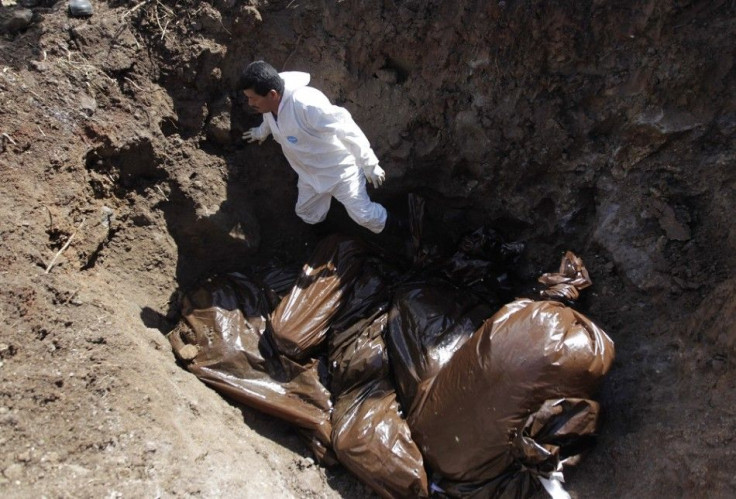Bedlam Burial Ground In London Yields 3,000 Skeletons Upon Digging

Archaeologists have excavated nearly 3,000 skeletons from the Bedlam burial ground in London. The ground is believed to have been in use between 1569 and 1738, with burial of more than 20,000 Londoners. According to the team working on the site, the skeletons belong to the victims of the Great Plague of 1665, the Great Fire of London and the English Civil War.
Bedlam, also known as the New Churchyard and Bethlem, was discovered at the entrance of the new Liverpool Street Crossrail station. The station is a part of a large project aimed toward expansion of London's railway network.
A team of archaeologists from the Museum of London was digging the site on behalf of Crossrail when they came across the skeletons. The project is expected to be completed by the end of September 2015 by a team of 60 archaeologists at Crossrail.
The deceased excavated from the Bedlam burial ground is believed to include the additional bodies who were buried there because other cemeteries were full, in addition to those who could not afford a burial in churches.
According to CNN, the skeletons will be cleaned and examined for identification of their age, sexes and diseases.
"1665 was the very last recorded episode of plague. There were 400 years of regular plague, and suddenly it stops," said Jay Carver, Crossrail's lead archaeologist, reported CNN.
"And what we want to be able to find out, from sampling the graves of that date, is why that is. And what it is about the bacteria that causes bubonic plague that suddenly changed at that point."
Bedlam derived its name from the Hospital of St Mary of Bethlehem, which took care of the mentally ill patients.
To report a problem or to leave a feedback on the article, send an e-mail to emailtoguneet@gmail.com.





















